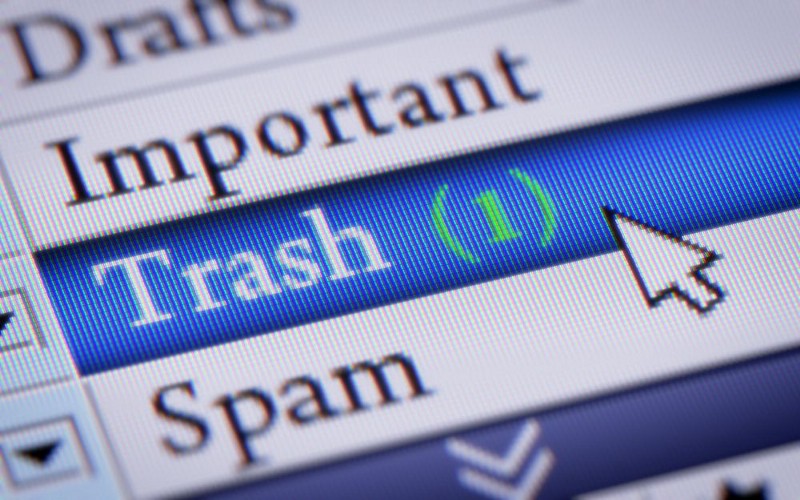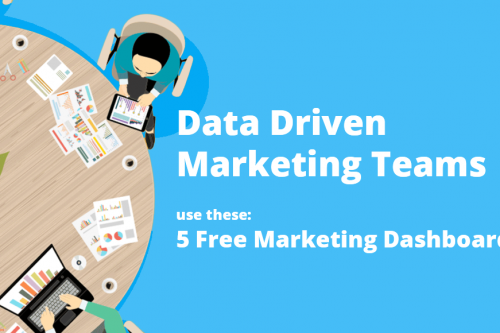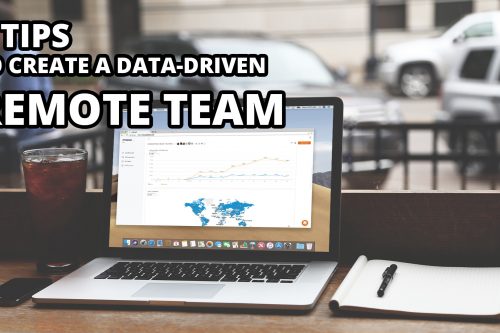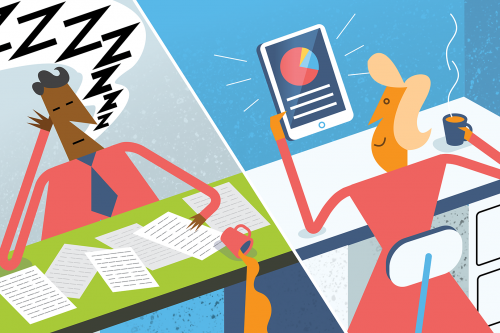So you can’t be bothered to map out your own automated email chain — well, we’ve done it for you!
When looking into how to design an automated email system for a growing company, one tends to come across images like the below:

Well… that’s great but, while this email flow is perfectly adequate, it’s designed for an industry that — in terms of it’s customer life-cycle — is much simpler than many software-as-a-service businesses, and doesn’t include elements such as free trials and ongoing subscriptions. In an attempt to create a template for SaaS businesses to use, I’ve developed the email flow below which, at the very least, can give you some ideas for how to map out your own flow. Remember that the key to an effective automated email system is to constantly be refining it. Each of the emails listed on the diagram can be further split into their relevant A/B tests. Also, this is only a simplified version! Despite its apparent complexity, your aim should be to grow this tree, making it target subsets of users with greater and greater accuracy, until you are firing off automated emails which are perfectly tailored for the customer, where they are in the sales cycle and their level of engagement with your product or service.
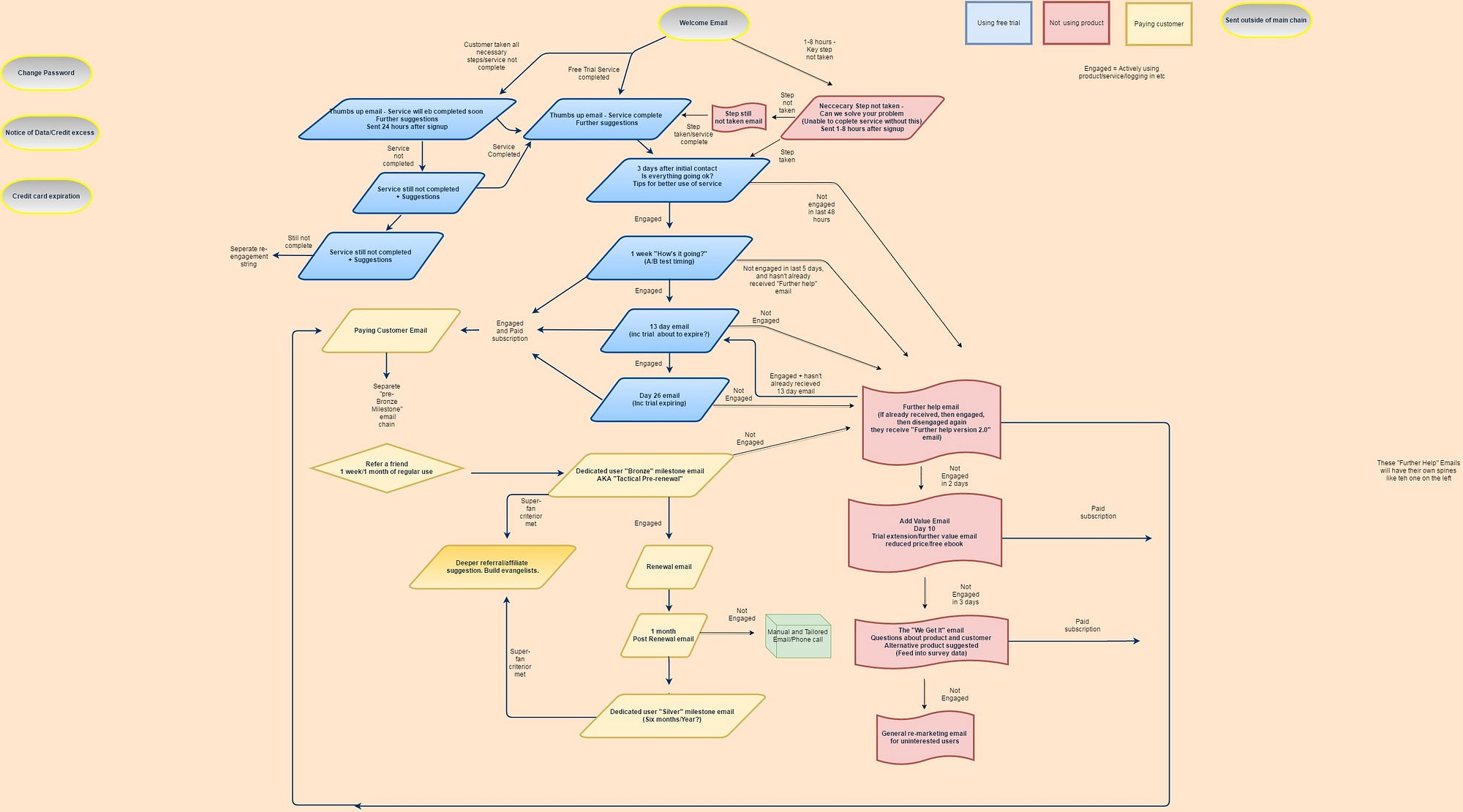
The flow splits users between 3 colors — blue (on the free trial), yellow (paying customer), and red (slipping/slipped away). The aim of the flow is to divert as many people as possible towards the yellow side of the diagram. The chart isn’t exhaustive, and might not fit all business scenarios, but it should show the common emails you should be hitting and provide some ideas for how to better retain and engage customers.
Welcome Email
It all starts with the Welcome email. This will often be the first email your customers receive and should be thoroughly A/B tested. Sometimes you’ll want a fairly hands off email, just saying Hi and Welcome. But most businesses, particularly e-businesses, will be prompting the customer to take the second step. Whether it is verifying their email, or providing some extra information so that you can actually begin working with them, this point in the email flow will often see your customers dividing into those who have completed a necessary step, and those who haven’t. You can see how they split off, and receive either a red or blue email shortly after.

Timing is crucial — spamming is not
On this diagram, the times for certain emails to be sent out are just suggestions. Having an email firing off 3 days after initial contact/sign-up can be a good idea — just checking in and seeing if they have everything they need. It may be good to have one firing off sooner, after 24 hours, but it will depend on the type of service you run, and whether they have recently received too many emails from you. To avoid being spammy, most email management systems will have settings that prevent too many emails being sent out on any one day. It is worth carefully considering the level of contact you want to make with customers and experimenting with timing, so you can better discover how to get an optimum retention rate.
The Free trial spine
Most free trials will have a time limit on them, and you will want to incorporate warnings of the trial’s endpoint at a suitable time in the email funnel. The main blue “spine” of this diagram represents a month’s free trial where we advertise only a two week trial. That way we can warn them of the trial’s ending on day 13, but if they still haven’t converted into a paying customer, we can extend it a further two weeks. This won’t suit every business, and you will need to experiment with how forceful your reminders about the trial period are, as well as the timing of these emails.
The Unengaged
When customers are no longer engaging with your service (this could mean not logging in, communicating, opening emails etc) you can have them earmarked to no longer receive messages in the blue chain, but move over into the red. We often say that if a customer doesn’t engage in 48 hours, they move into the chain, but the later in the cycle they are, the longer this period becomes. This will vary drastically depending on your business, but the key thing is to have them move into a new funnel, with new email content. The content should be focused on solving their problems, and attempting to find ways to talk to them in a more personal manner — through chat app or by phone. You will be more likely to help them this way and they will be more likely to move back into the blue or yellow parts of the flow. Once it becomes clear that they are truly uninterested in your services, you should switch into “survey mode”. Rather than badgering them, see if you can get them to explain why they didn’t care for your service or product. This information can be crucial in modifying your service and improving your sales funnel.
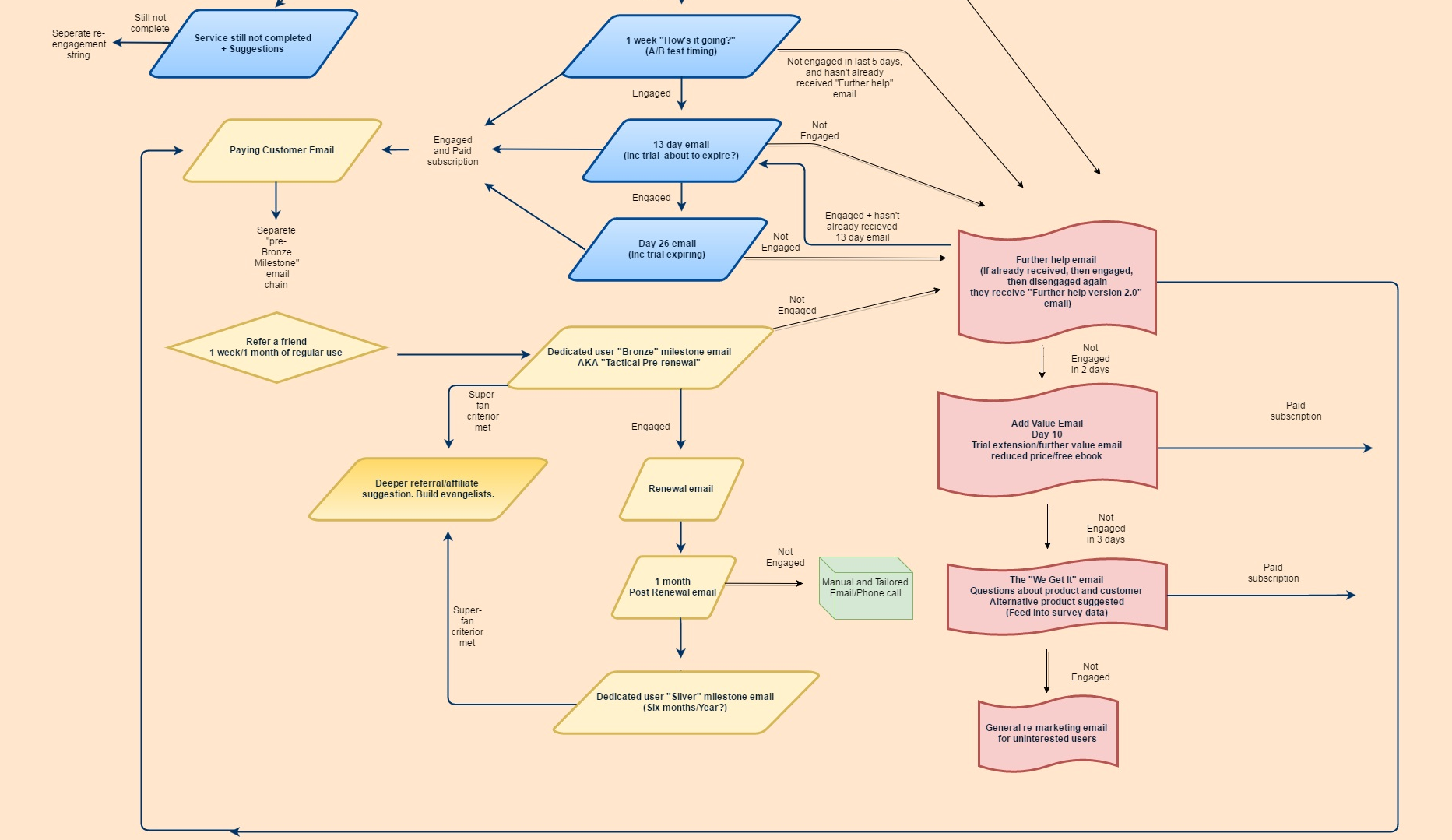
Paying Customers
Once people do become paying customers, there is a whole new life-cycle they enter that revolves around both keeping them as a customer, and seeing if there is any way to leverage their patronage into further sales. Simple initiatives like a refer a friend program and rewarding higher levels of engagement can easily be built into this email cycle. Remember that these customers are valuable, so, depending on your resources, you should have as much personal contact with them as possible. It is tempting to let an automated email system take the brunt of the work off your shoulders, but a simple phone call can often do wonders for maintaining your client’s interest in your service. The green box in our diagram indicates where we felt it was imperative to begin making more personal and tailored contact. This contact will not be automated and could feature much earlier in the email flow — including in the blue free trial area. You will need to asses what is feasible for your manpower and the amount of time needed to spend on personal contact.
Final thoughts…
So there you have it, an email flow just for you SaaS people. When you start building your own automated email system, having a map like this will make life infinitely easier when it comes to plugging in all the necessary rules each email will require (and working out what’s going wrong when an email is getting fired off to the wrong people). Automated email systems that divide customers into a lot of sub-sets can become complicated, but the effort is worth it. Being able to tailor messages better to customers, and solve their problems just at the right moment, will make a huge difference to your conversions. But remember… in an age where automation is a buzz-word, businesses worldwide aren’t just managing to save man-hours with new technology but they’re becoming more impersonal in the process. So fight this trend, and put effort towards growing your email flow diagram as wide as possible.
Thanks for reading. Let us know what you think in the comments below.

